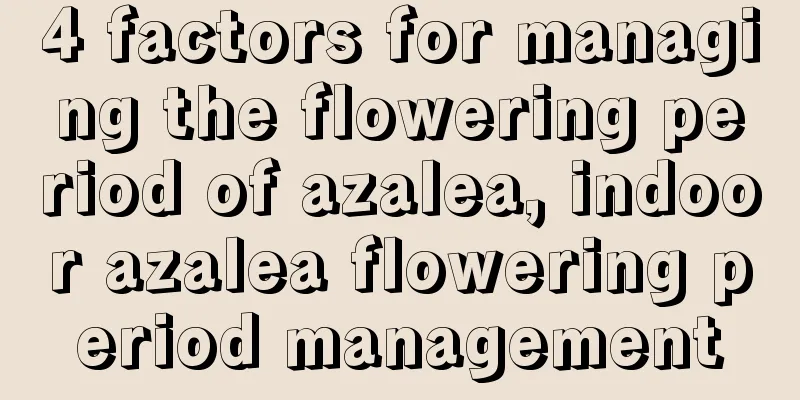New technology for high-yield planting of peanuts

|
In soil classification, sandy loam is considered to be an ideal soil for growing peanuts . It is not only conducive to the growth of peanuts, but also easy to harvest. However, not all areas have sandy loam soils. Does this mean that peanuts cannot be grown on other types of soil? That is not the case. In fact, as long as deep plowing and careful cultivation are carried out, other types of land can also be used to grow peanuts, and the results may be better than sandy loam. Let’s learn about a new high-yield peanut planting technology. 1. Choose high-quality seeds Selecting superior varieties is the key to increasing peanut yields, and all efficient agricultural techniques require high-quality seeds to achieve the best results. At present, in Jinxian County, in addition to the widely planted Yuexuan 58 and Yueyou 221, there are also excellent varieties such as Zhongkaihua No. 1 and Yueyou 13. In order to increase the germination rate of seeds and ensure that all seedlings grow, the seeds should be exposed to the sun for 1 to 2 days before sowing, and carefully selected. Choose peanut kernels that are large, plump, bright in color, and free of insect pests and mildew as seeds. When sowing, use 10 to 15 kilograms of calcium magnesium phosphate fertilizer per 667 square meters mixed with moistened peanut kernels to help the peanut seedlings grow stronger. 2. Carefully cultivate the land As a deep-rooted crop, peanuts have high requirements for soil. First of all, deep plowing and fine harrowing are needed to ensure that the soil is deep and loose, which is conducive to the emergence of peanuts and the development of the root system, increasing the number of roots and improving the ability to absorb nutrients and water. Secondly, we must prevent water accumulation and strictly plan the bed width to 266.4 to 333 cm to ensure smooth drainage and avoid water accumulation in the beds. 3. Apply sufficient base fertilizer Peanuts have rhizobia and strong nitrogen-fixing ability, but in order to achieve high yields, they still need to be given appropriate amounts of phosphorus, potassium, and calcium fertilizers. According to research, 150 to 200 kilograms of peanuts are produced per 667 square meters. During the growth process, it needs to absorb 12 to 17.5 kilograms of pure nitrogen, 2 to 3 kilograms of phosphorus, and 5.5 to 6 kilograms of potassium, of which 2/3 are basal fertilizers. 4. Sow early at the right time Timely early sowing helps to cultivate short and strong seedlings, reduce rust diseases, and ensure that the seedlings are full and strong. However, sowing too early may lead to late spring cold snap, resulting in rotten seeds, lack of seedlings or failure to germinate, thus affecting yield. It is generally recommended to sow in early April when the soil temperature is stable at above 15°C, at a depth of about 4 cm. 5. Reasonable density planting The early peanut plant is upright and compact, suitable for dense planting. In order to give full play to its excellent characteristics, the seed amount per 667 square meters should be increased from 10 kg to 15 kg, and double-kernel strip sowing should be adopted, with row spacing maintained at 30 cm and plant spacing at 16.7 cm, to ensure that 12,000 to 13,000 trees are sown per 667 square meters. 6. Reasonable crop rotation Peanuts should not be planted continuously because it will cause phosphorus, potassium and calcium deficiencies in the soil, affecting the growth of peanuts and causing serious diseases and insect pests. The peanut yield of continuous cropping for 2 to 3 years is 20% to 30% lower than that of crop rotation. In order to reduce the impact of diseases and ensure increased production, reasonable crop rotation is the key. 7. Cultivation and clearing of trees Cleaning the seeds is the first tillage after the peanut seedlings emerge. The topsoil around the seedlings is dug up to allow the cotyledons to directly see the light. Avoid immediate tillage after clearing the trees. Wait 15 to 20 days until the lateral branches are fully developed. This helps promote root growth and improves drought resistance. 8. Control the growth Controlling the vigorous growth of peanuts is an important measure to increase production. Paclobutrazol is the most widely used and most effective plant growth inhibitor in my country. 9. Prevent and control pests and diseases Common diseases and pests of peanuts include aphids, cutworms, white grubs , and fall armyworms. For underground pests, 5% Zidan granules or chlorpyrifos can be mixed with base fertilizer, and aphids can be sprayed with 10% arsenic. 10. Harvest at the right time Timely harvesting can improve yield and oil quality. Harvesting too early may result in unsaturated seeds and low kernel yield; harvesting too late may cause the fruits to fall easily. The harvest time should be when the stems and leaves turn yellow, the shell becomes hard, and the peanut fruit takes on its inherent color. The above is an introduction to the key technical points for high peanut yields. While making rational use of suitable land to plant peanuts, we must also do a good job of field management.
|
<<: When can peach blossom cuttings take root? Can peach blossoms be propagated by cuttings?
>>: The time and method of peach blossom grafting, when can the ornamental peach blossom be grafted
Recommend
How many days does it take for chives to sprout? How to plant them quickly?
How long does it take for chives to sprout? Chive...
How to propagate peony by cuttings
Cutting method Preparation before cutting First, ...
Is Lady Golden's Bougainvillea in bloom? What color is Lady Golden's Bougainvillea?
Many people like to grow a pot of bougainvillea a...
How many lucky bamboo roots are there to attract wealth?
How many roots attract wealth Water-grown lucky b...
What fertilizer do you need to grow chives at home? (What fertilizer do you use to grow chives?)
1. The growth and development characteristics of ...
The reasons and solutions for the yellowing of yew leaves
Yew is a rare plant. Now there are many artificia...
How to grow freesia in spring
1. Lighting Freesia itself likes light, but is af...
How to propagate spiderwort by cuttings
1. Plant introduction Net-grass is native to Amer...
What are the cultivation methods and precautions for large potted green radish?
How to grow green radish in a large pot The branc...
Does the dragon beard tree prefer shade or sun?
Does the dragon beard tree prefer shade or sun? T...
Where is the best place to plant Polygonatum odoratum
Polygonatum odoratum planting area Wild Polygonat...
Will eating sweet potatoes make you fat? Will eating sweet potatoes frequently make you fat?
1. Will you get fat? People generally believe tha...
What to do if the jade tree has root rot
1. Reasons 1. If the plant is maintained in water...
Which flowers are suitable for weddings?
1. Rose. Red roses are usually used in weddings, ...
Walnut's growing environment and local conditions
Walnut growing environment and conditions Walnut ...









